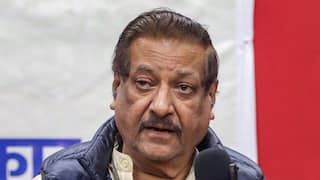Explorer
Scrap the Indus Water treaty? Here's step No.1

Despite last Sunday's Uri attack, immediate military retaliation does not seem to be on the cards. That, however, does not mean that India has no non-conventional, non-nuclear options open to it.
Strategic thinkers like Brahma Chellaney have argued that India should unilaterally withdraw from the Indus Water Treaty, signed in 1960 and in operation since then, uninterrupted despite three wars between India and Pakistan. The Treaty does not provide for its dissolution or for unilateral withdrawal of any country.
Chellaney in a recent article argues for using international law, specifically Article 62 of the Vienna Convention on the Law of Treaties which provides for dissolution based on fundamental change of circumstances. Former Foreign Minister Yashwant Sinha too has suggested withdrawal from the Treaty, a demand that is likely to gather pace as the Government explores different options.
The Indus Water Treaty was necessitated by the partition of Punjab in 1947, which left the head works of the Indus basin irrigation system in India and the actual canals in Pakistan.
At independence, Pakistan panicked at the possibility of India’s turning off the tap though the two countries soon entered into a stand-still agreement which ensured that things would go on normally, giving the two sides time to negotiate a mutual agreement.
Pakistan, not satisfied, approached the Americans for help in formalising its access to the river waters. The cause of Pakistan’s concerns could be its own behaviour with Kalat (Balochistan) and Jammu & Kashmir, where it unilaterally used force to try incorporate these kingdoms despite having entered into stand-still agreements with their rulers.
The Americans, in the guise of journalism, sent David Lilenthal, a former Chairman of the US Atomic Energy Commission and Tennessee Valley Authority, to the region.
He proposed joint development of the basin to help both countries produce more food, fearing war if there was no agreement. He also suggested the involvement of the World Bank to help both countries reach an agreement.
Both countries agreed and negotiation produced a draft agreement by 1954 but Pakistan refused to accept it, seeking better terms. The World Bank also moved from being a facilitator to one becoming an adjudicator.
This was despite the World Bank's earlier assurance to India, required to overcome India’s objections, that their role would be purely a technical one.
The final agreement in 1960 basically mirrored the 1954 draft in that India was given the rights to the three East flowing rivers – Ravi, Beas and Sutlej – while Pakistan was given 'permanent' rights to the three West flowing rivers – Indus, Ravi and the Jhelum.
India could use waters of these Western rivers to a limited amount, essentially non-consumptive use, drinking water.
In percentage terms, Pakistan got over 80%, an unprecedented amount for a lower riparian. In the final Treaty, Pakistan was extended soft loans and grants to build alternate systems, with even India required to contribute to it.
A legitimate question which arises is, why did India agree to such egregious terms? In fact, why did it agree to what became third party adjudication of its rights to waters flowing in its territory?
By 1949 the Cold War was unfolding, and though not a treaty ally, Pakistan was seen by the British as more likely to be a junior partner in containing Communism. The US went along and soon Pakistan became a camp follower of the West.
India’s development needs were huge and the US was India’s biggest donor, followed by the UK. India also needed increased access to the World Bank. These circumstances forced India’s hand.
The Treaty effectively came into force in 1970, and Pakistan has twice resorted to dispute settlement, first using a neutral expert in the Baglihar case, and later the Permanent Court of Arbitration (PCA) in the Kishenganga dispute it raised.
The PCA’s interim and final ruling are highly damaging to India, restricting its use of the Western rivers far beyond what the Treaty provided for. This would constrain India’s ability to produce enough electricity for Jammu & Kashmir or meet its other development needs.
Pakistan is too important a country for the US to allow it to go under, which would happen if its access to the Indus system were to be disrupted, turning it potentially into a desert. China is also not likely to allow matters to precipitate beyond a point.
However, India should take a leaf out of the Chinese stand, welcomed by Pakistan, that it would not accept the ruling of the Permanent Court of Arbitration. This first step, rather than outright withdrawal, would allow India to sufficiently raise the costs of exporting terror to Pakistan without resort to outright aggression.
Disclaimer: The opinions, beliefs and views expressed by the various authors and forum participants on this website are personal and do not reflect the opinions, beliefs and views of ABP News Network Pvt Ltd.
Follow Blog News on ABP Live for more latest stories and trending topics. Watch breaking news and top headlines online on ABP News LIVE TV
View More


























